Travelling with Stabilo #13: Finding Michelangelo Part 2 – Florence
经纬游踪 #13: 寻找米开朗基罗(下)- 佛罗伦斯
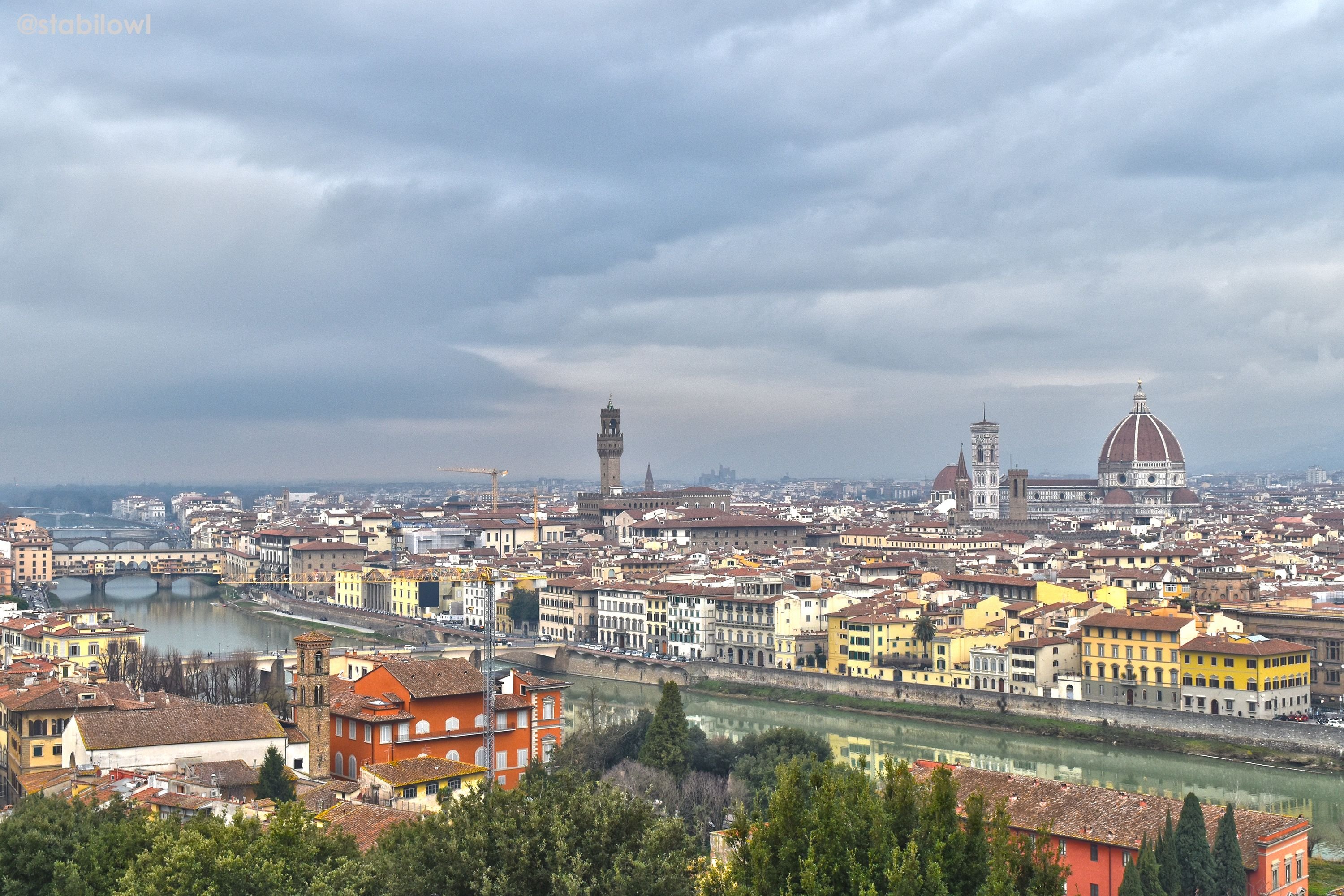
Finding Michelangelo Part 1 – Rome 寻找米开朗基罗(上)- 罗马
Michelangelo's unparalleled artistic talent and obsession to his work were obviously the key to his success. However, it is also true that his path to stardom was strongly swayed by the tide of history. In particular, Michelangelo’s life was intertwined with one of the most influential families in the 16th Century Europe – The Medici’s. Today I will be taking you to Florence, where the Medici was based and where Michelangelo was born, to continue our journey in following the footsteps of Michelangelo.
米开朗基罗的对艺术的天赋和孰着是有目共睹的。可是他的成功也离不开时势所催。十六世纪欧洲的时势,与佛罗伦斯的美第奇家族有着密切的关系。我们来到了佛罗伦斯,继续寻找米开朗基罗的足迹。

Michelangelo was born in a small town near Florence. He was send to Florence to study by his father during his teenage years. At that time, Florence was the base of Renaissance, and a mixing pot of the most contemporary art, science and philosophy. It’s in Florence that he found Ghirlandaio, a famous fresco painter, and became his apprentice. Under the guide of Ghirlandaio, Michelangelo’s artistic ability flourished. When he was age fourteen, as one of the two best students of Ghirlandaio, Michelangelo was sent to become a court artist for the Medici’s, and his life was changed forever. The Medici Family was the rich ruling family of Florence who made their fortune via banking. And at Renaissance times, people showed their riches by building churches, and of course, a majestic church must have an equally majestic interior with painting and sculpture masterpieces. This meant that the people that young Michelangelo most often met when living with the Medici’s were master painters, sculptors and architects. It was under this environment that young Michelangelo grew up, exposing to the arts, literatures and philosophy from masters at the time. Unfortunately, in the beginning of the 1500s, the Medici Family was overthrown, and was replaced by a zealously religious government headed by Savonarola. Savonarola deemed all art form, especially those involving the human body, as evil, and so as a sculptor who make sculpture of bodies, Michelangelo was forced out of Florence.
米开朗基罗在佛罗伦斯旁的小镇出生。在十多岁的时候他被他父亲送到佛罗伦斯学习。当时的佛罗伦斯是文艺复兴的大本营,是个艺术,科学和哲学的大熔炉。在这个大背景下,小米开朗基罗找到了基兰达奥,一位颇为出名的壁画家为师。在基兰达奥的指导下,米开朗基罗开始展示他的艺术天赋。在十四岁那年,米开朗基罗以基兰达奥高徒的身份,成为美第奇家族的御用画师,从此和美第奇家族结下不解渊源。美第奇家族是管治佛罗伦斯的大家族,以银行起家。而当时的欧洲,有钱人炫富的方法就是兴建教堂。雄伟的教堂一定要配上大师级的油画和雕刻才能显得神圣高贵。所以很多艺术家,建筑家都是美第奇府中的常客。在美第奇家族的照顾下,米开朗基罗接受了艺术,文学,以至哲学上的熏陶。可惜好景不长,在十六世纪初,佛罗伦斯政变,美第奇倒台。宗教主义的新政排斥所有勾画人体的艺术,而身为雕刻家的米开朗基罗被迫离开了佛罗伦斯。
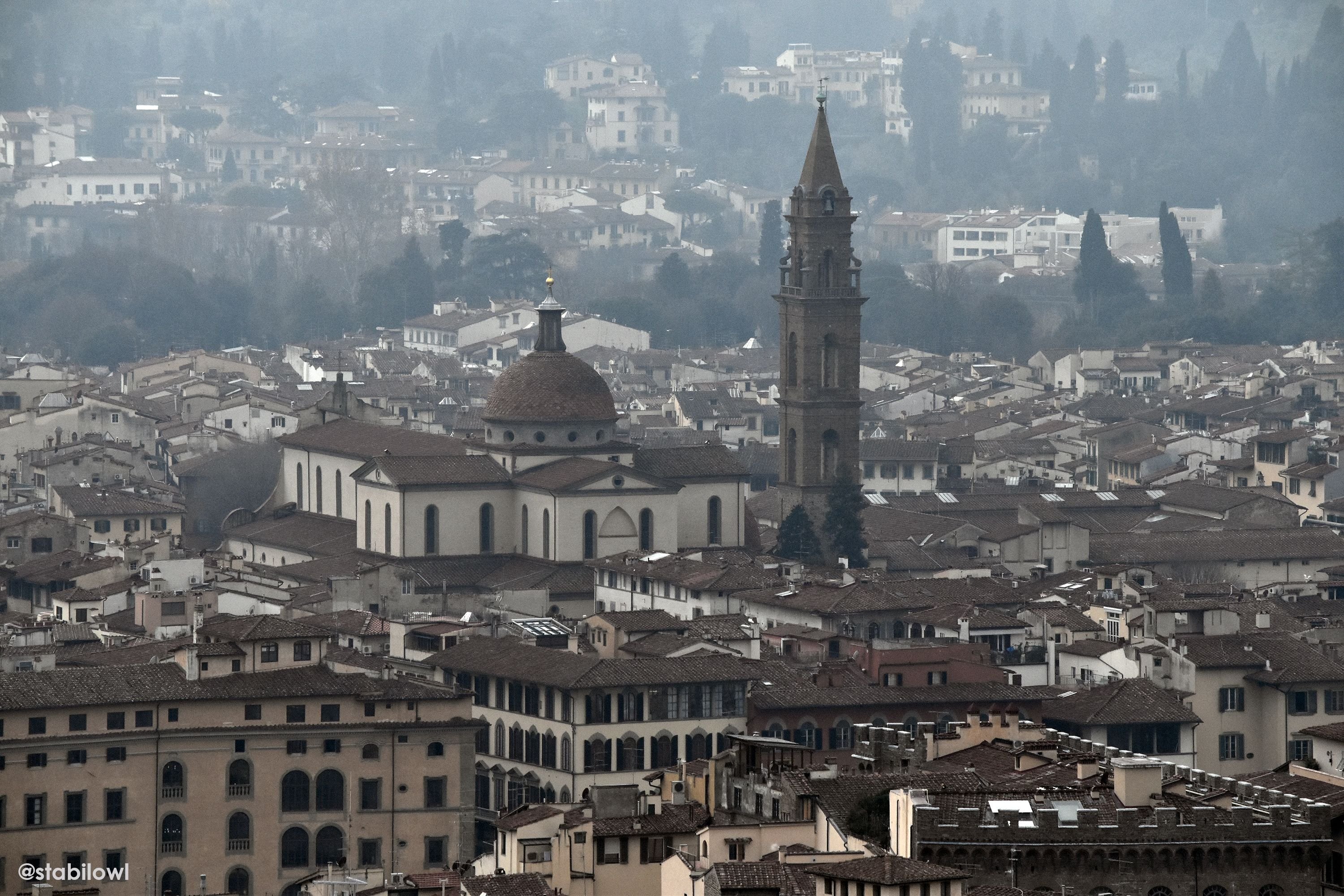
Few years later, when Savonrola fell, the new governor of the new Republic of Florence invited Michelangelo back to Florence, to create a statue that symbolises the freedom of Florence and her people. So Michelangelo created his most famous sculpture, David. David was placed in Piazza della Signoria, the city plaza, to celebrate the freedom of Florence. It is now located inside Galleria dell'Accademia di Firenze, one of the many art museums in Florence. The Academia is quite a small museum, and 1 hour is enough to tour the whole place. It is recommended that you visit during early hours just after it opened, or in the afternoon close to closing time, to avoid the crowds. As soon as you get into the Academia, you can see David standing at the end of the corridor. The 4 m high statue was carved using a single marble stone, and was based on the bible story David and Goliath, which celebrate men who fought against the power. Michelangelo’s detailed knowledge and obsession with the human body clearly made their mark on David. Every single detail of the human body, including the shape of his muscles, veins of his hand, as well as his firm buttocks is displaying what Michelangelo thought was the perfect human body. The face of David was based on Apollo, the God of the Sun, making David a symbol of both strength and wisdom.
新政倒台后,米开朗基罗被请回,为新政府创作一个象征佛罗伦斯自由的雕像。米开朗基罗为创造了他最有名的雕刻,《大卫》。《大卫》原本是放在佛罗伦斯旧宫前的领主广场,现在放置于佛罗伦斯美术学院。佛罗伦斯美术学院是佛罗伦斯众多美术博物馆之一,专门为大卫像而建。它的规模不大,除了大卫像以外没有太多东西看,一小时就足够。建议清早开门时或下午四点去,人比较少。博物馆一进门就可以看见《大卫》,耸立在中心展览厅。四米多高的大卫像是以一块完整大理石雕刻而成,是以圣经故事大卫与歌拉亚为蓝本,歌颂战胜强权的人们。从大卫像可以看出米开朗基罗对胴体的了解和崇拜。那强而有力的肌肉,青筋突出的手背,和紧致圆滑的臀部,把人体的完美演译得淋漓尽致。大卫的脸是以太阳神阿波罗为蓝本,眼睛刻得瞳瞳有神,很好的把大卫勾勒成智慧和力量的代表。
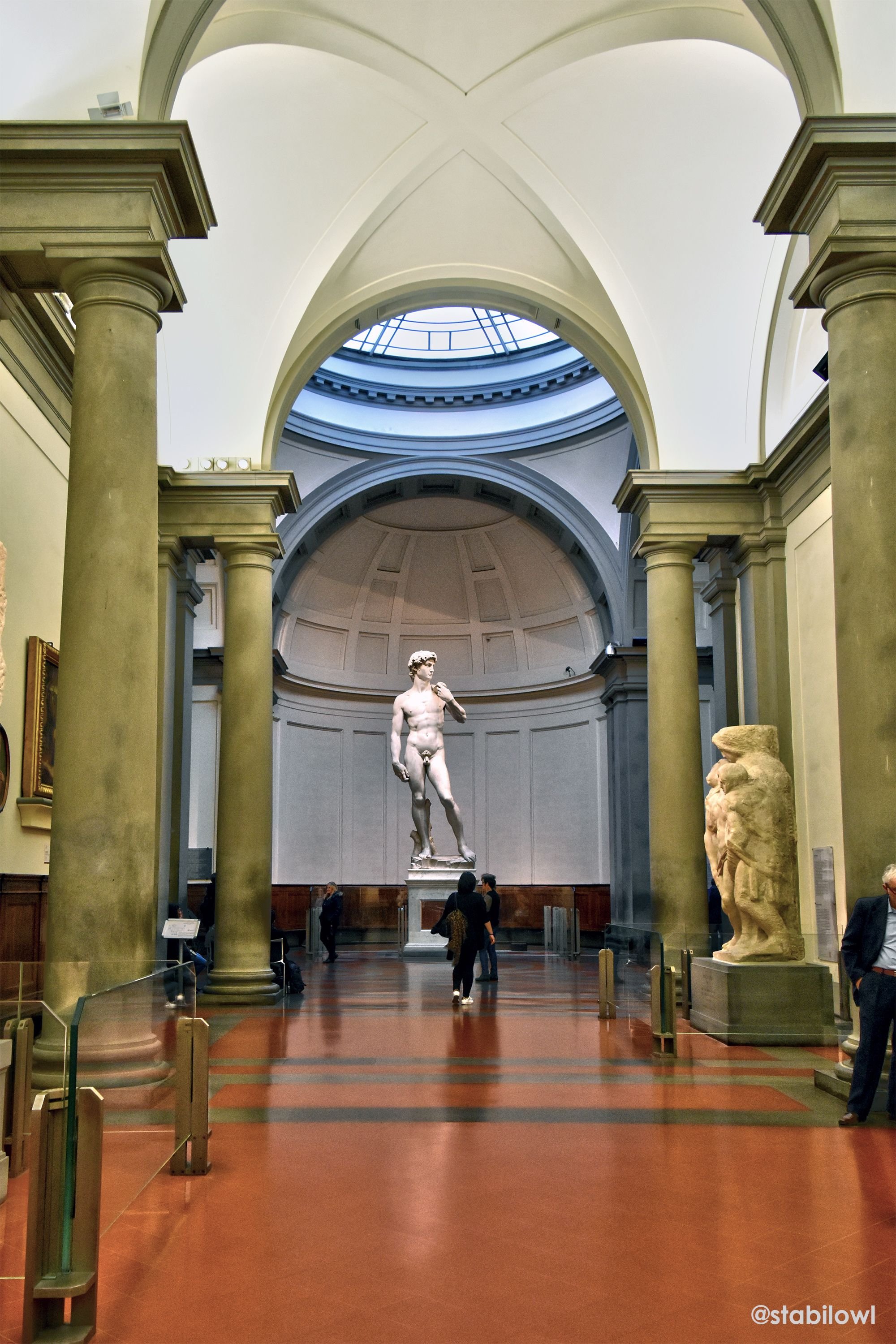
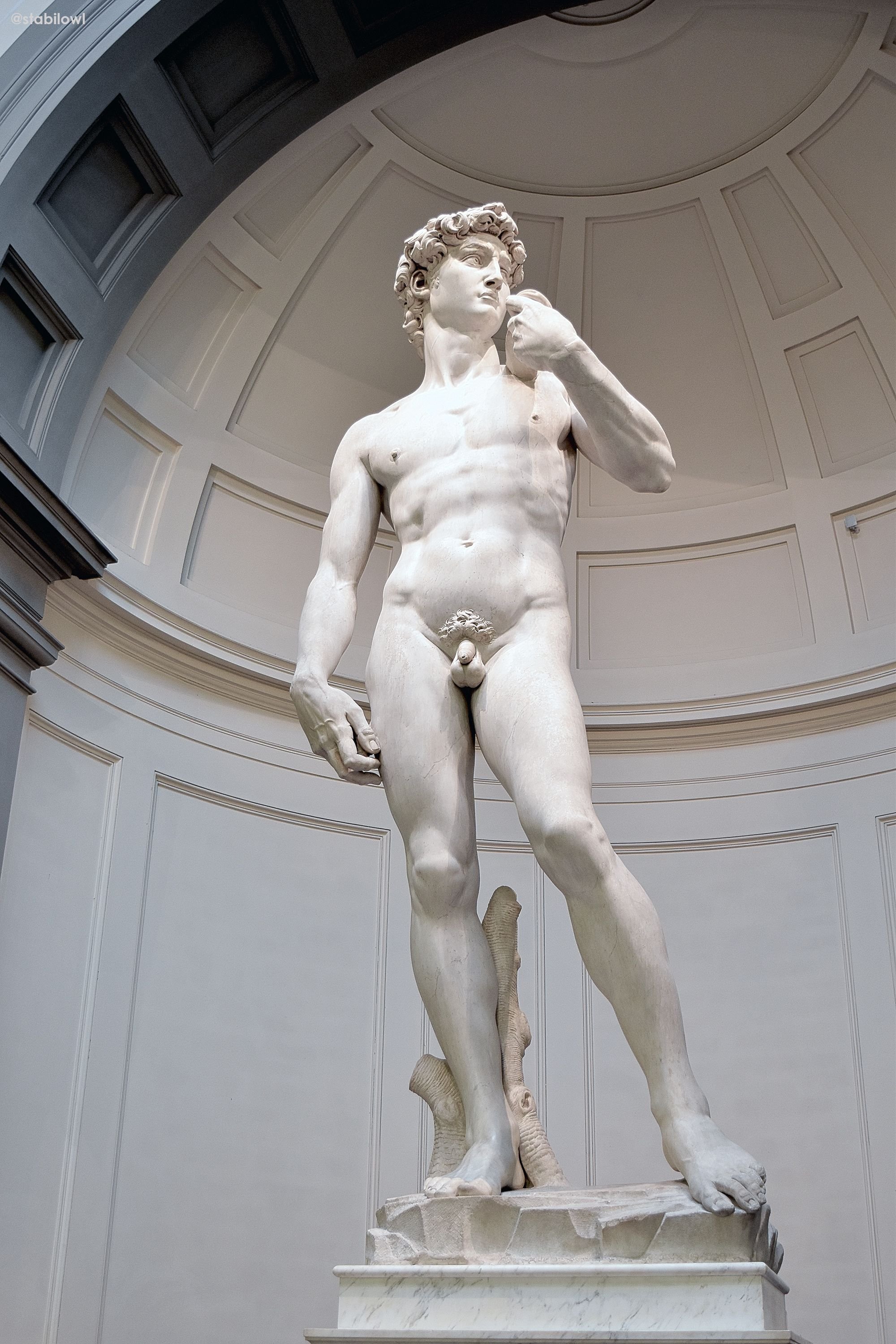
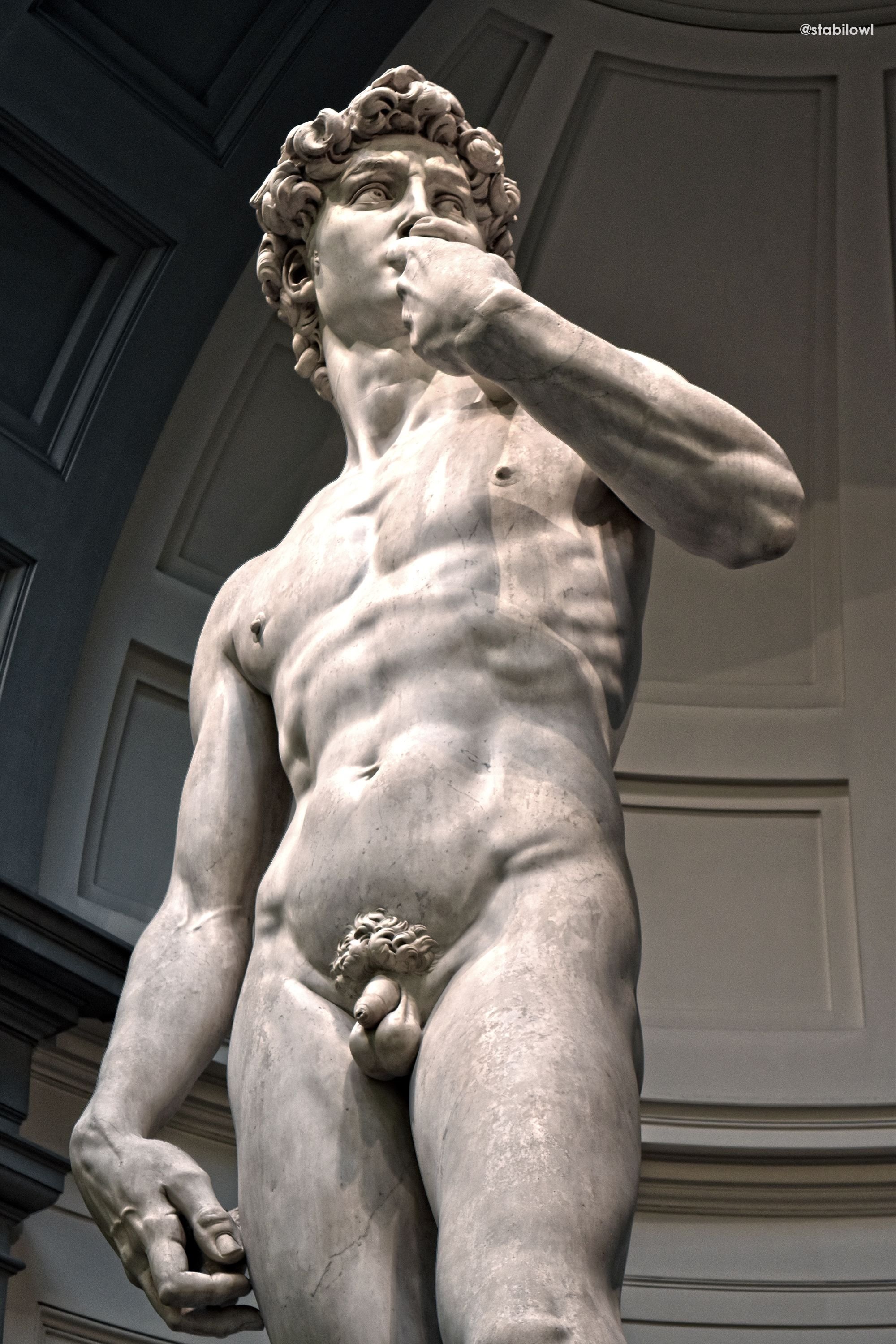
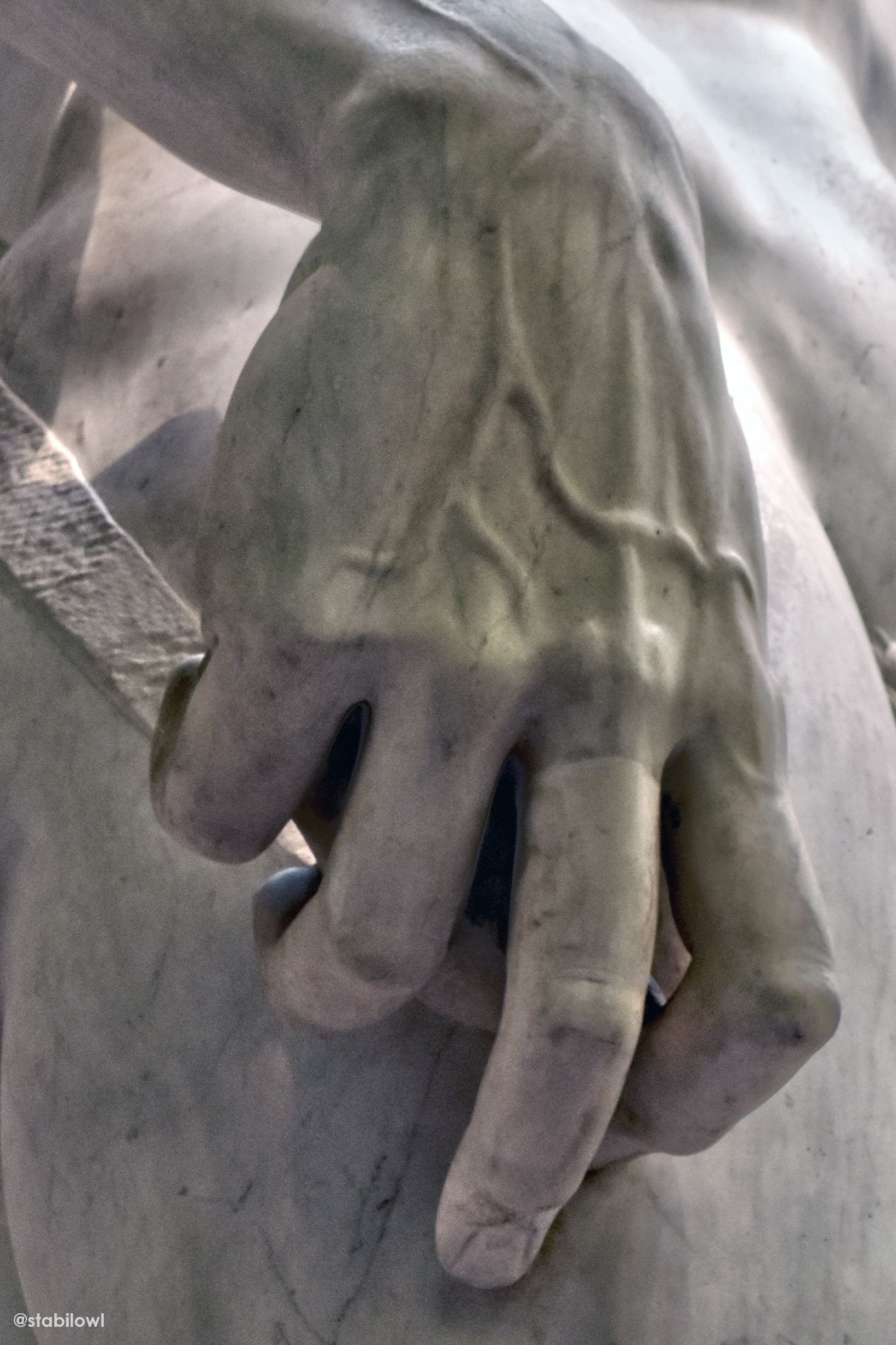
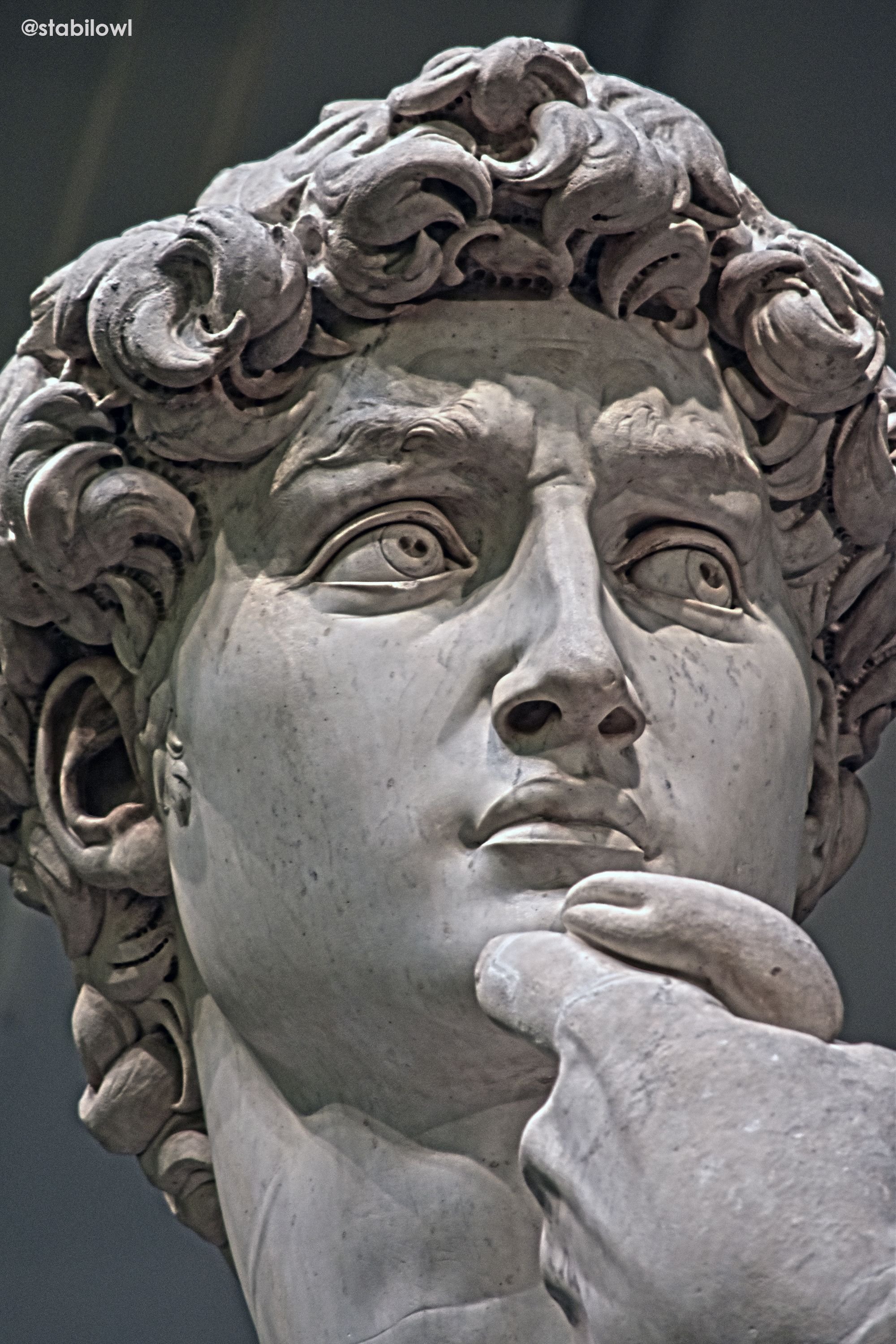
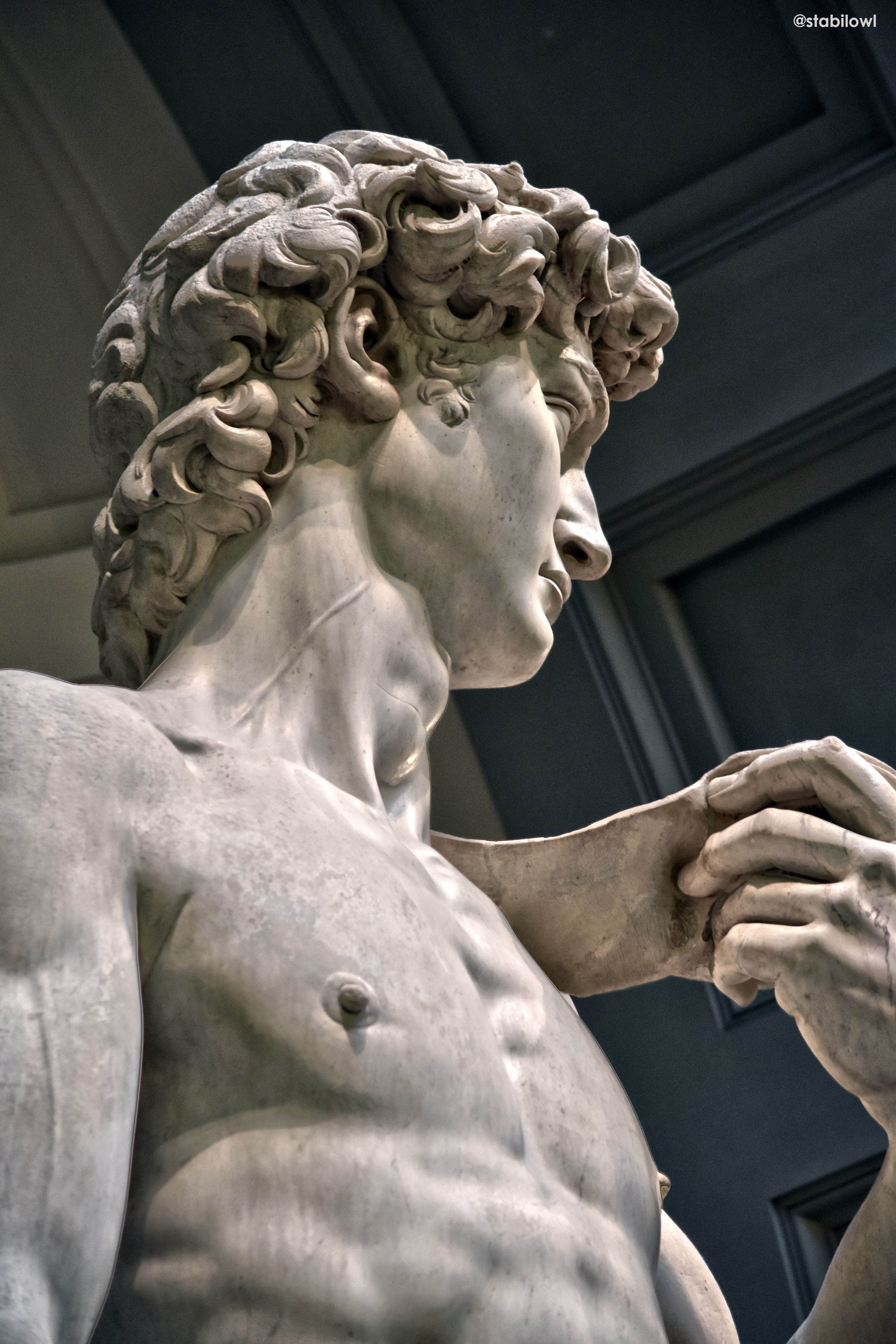
Apart from David, there are also a few unfinished statues by Michelangelo, which is characterised by their unfinished faces. There are also two smaller exhibition rooms, one displaying classical oil painting, whereas the other houses sculptures by Florence art students. If you like to sketch, don’t forget to bring pen and paper, and join in with the many budding artists practising sketching skills in the Academia.
除了大卫像,美术学院里还有几个米开朗基罗没完成的雕像。学院里还有两个小展览厅,一个放了油画,另外一个放了佛罗伦斯美术学生的雕刻作品。如果你喜欢画画,记得带上纸和笔,就可以和城中的美术学生一起对着美丽的大卫像素描。



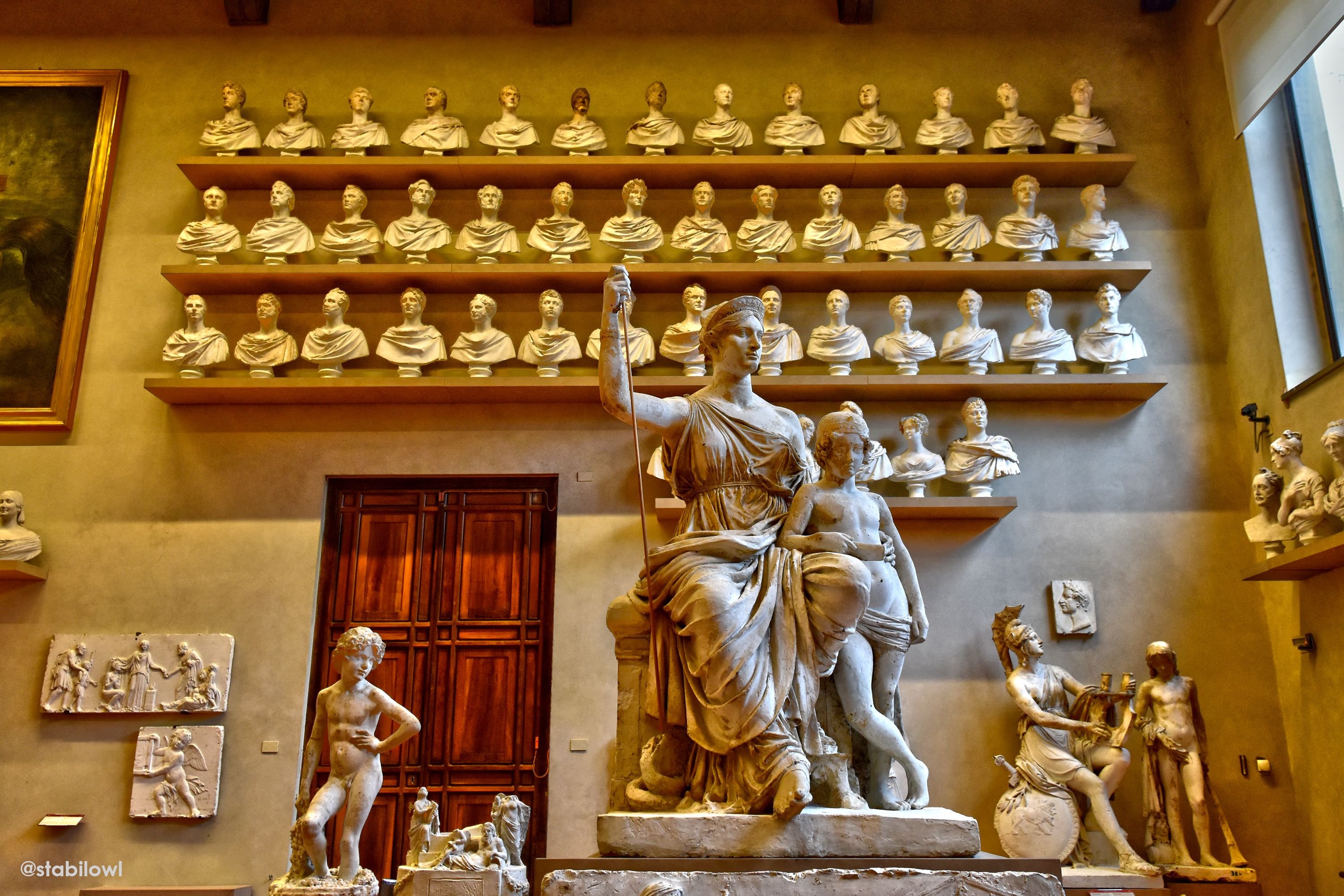

During the period, Michelangelo also created the Doni Tondo. Doni Tondo is one of the few oil painting works by Michelangelo, and rumour has it that it was made for a certain nobleman for celebrating his new marriage. The holy family, Mary, Joseph and baby Jesus are featured at the centre of the painting. On the side was John the Baptist in a child form, watching over the holy family. Strangely enough there is also a row of naked man in the background of the painting. Just like other work by Michelangelo, and details on the human body is astonishing, almost life-like. The frame was also designed by Michelangelo, and symbolises the union of the two families using their respective crests. Doni Tondo is currently displayed in the Uffizi.
米开朗基罗在同一阶段还创作了《圣家图》。《圣家图》是米开朗基罗为数不多的油画作品之一,据说是某贵族用来纪念他和妻子的新婚。画中三人为圣母玛利亚,玛利亚丈夫约瑟,和圣婴耶稣。在画中右边看着圣家的小男孩是圣约翰。画的背景里还有一排裸男。和米开朗基罗的其他作品一样,《圣家图》上人家的胴体细节,特别是肌肉都画得非常仔细,栩栩如生。《圣家图》的图框也是米开朗基罗设计的,标志着贵族男和妻子两人家族的结合。《圣家图》现在被收藏在佛罗伦斯的乌菲兹美术馆。



Soon after finishing his work at the Sistine Chapel, his client Pope Julius II passed away. His successor was Pope Leo X, one of the sons of Lorenzo Medici who was the one who took Michelangelo in when he as a teenager. Leo X was determined to make the Medici’s great again, and he so he threw lavish parties inviting his allies, sent out armies to take down Urbino and made his nephew Duke of the region, and of course, spent massive amount of gold for paintings and building churches. So Leo X became Michelangelo’s Client again, and ordered him to design and built the Medici Chapel. Medici Chapel is located close to the Florence Cathedral, and was meant as an extravagant resting place for his father and his elder brother. Michelangelo designed and built the New Sacristy part of the chapel, which is now the tomb of two Medici’s, Leo X’s brother Giuliano Medici, and Leo X’s cousin Lorenzo II Medici. On the tombs are Michelangelo’s work, Night and Day which are on Giuliano’s tomb, and Dusk and Dawn which are on Lorenzo II’s tomb. In Day and Night, a man was used to represent Day and a Woman Night. The man’s face notable lacks details which is commonly seen in Michelangelo’s late work. Similar to Day and Night, Dawn is represented by a maiden while Dusk by a sleeping man. Inside the New Sacristy there is also a symbolic tomb for Cosmo Medici the first, the ancestor to this great family, and Lorenzo Medici, Leo X’s father, with a Madonna and Child statue that was also Michelangelo's work. Interestingly, Leo X’s extravagant spending directly led to Martin Luther’s denouncement of the Catholic church and the start of Protestant Reformation. This in turn led to the sack of Rome and the downfall of the Medici Popes. Although the Medici’s later gained power again back in Florence, Michelangelo who was opening against the Medici’s rule at this stage was forced to relocate to Rome. Lorenzo Medici’s tomb was never finished.
在米开朗基罗完成西斯延礼拜堂之作后不久,委托他的教宗儒略二世去世。继承他的是美第奇家族的利奥十世。美第奇家族正式东山再起。利奥十世要带领美第奇家族再次辉煌。他大肆挥霍,举办盛宴笼络人心,出军帮侄儿打下乌尔比诺的江山,还用教会的金库去请有名的画家和建筑家大兴土木。其中就请了小时候跟他同住过的米开朗基罗去设计和兴建美第奇的家族教堂。美第奇礼拜堂位于佛罗伦斯中心,在圣心百花大教堂附近,为美第奇家族重要成员遗棺所在。利奥十世找米开朗基罗的初衷就是想找个与美第奇家族有渊源的大师,为他父亲和兄长建个风光的长眠之地。米开朗基罗设计了现有的美第奇礼拜堂的新祭衣间墓穴,而王子礼拜堂则是到十七世纪才建在墓穴上。墓穴里的两边的墓碑是米开朗基罗名作日与夜和朝与暮。《日与夜》是利奥十世的兄弟,朱利亚诺之墓碑,以男人的阳刚代表日,女人的阴柔代表夜。《日》里男人的脸刻得异常模糊,这是米开朗基罗后期作品常见的,不知道是因为没有时间完成还是想表达某种意思。《朝与暮》则是利奥十世的姪儿,罗伦佐二世之墓,以充满朝气的少女代表朝,沉睡的男人代表暮。在墓穴里还有一个纪念美第奇一世的墓碑,上面的圣母与圣婴像也是出自米开朗基罗之手,可是墓碑下是个空棺。值得一提的是,利奥十世的挥霍直接导致马丁路德的起义和基督新教的分支,也导致了美第奇的倒台。虽然美第奇最后把佛罗伦斯夺回,米开朗基罗因为帮助了倒台害怕迫害离开了佛罗伦斯而定居罗马。而利奥十世父亲的墓碑最后也没有建成。

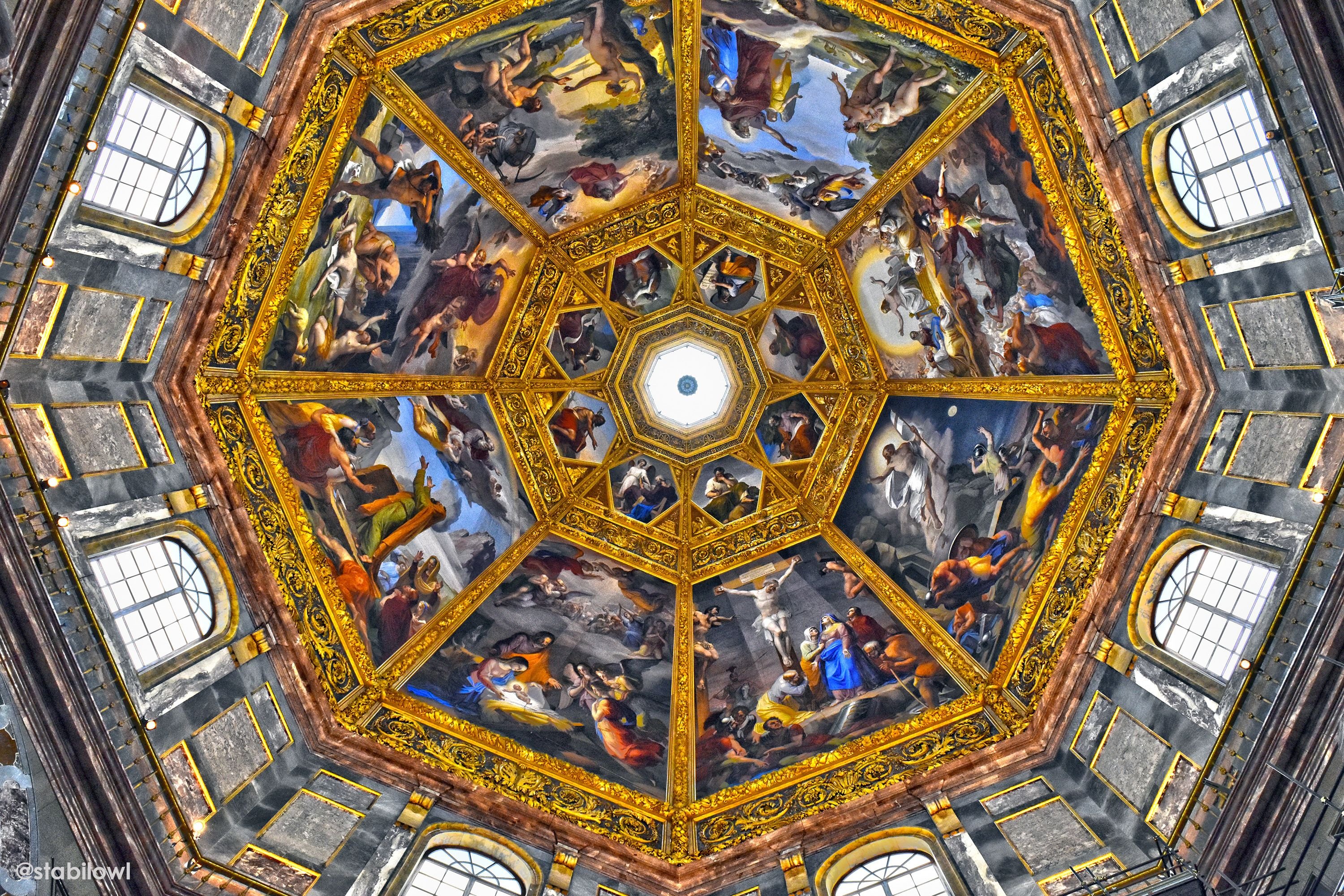
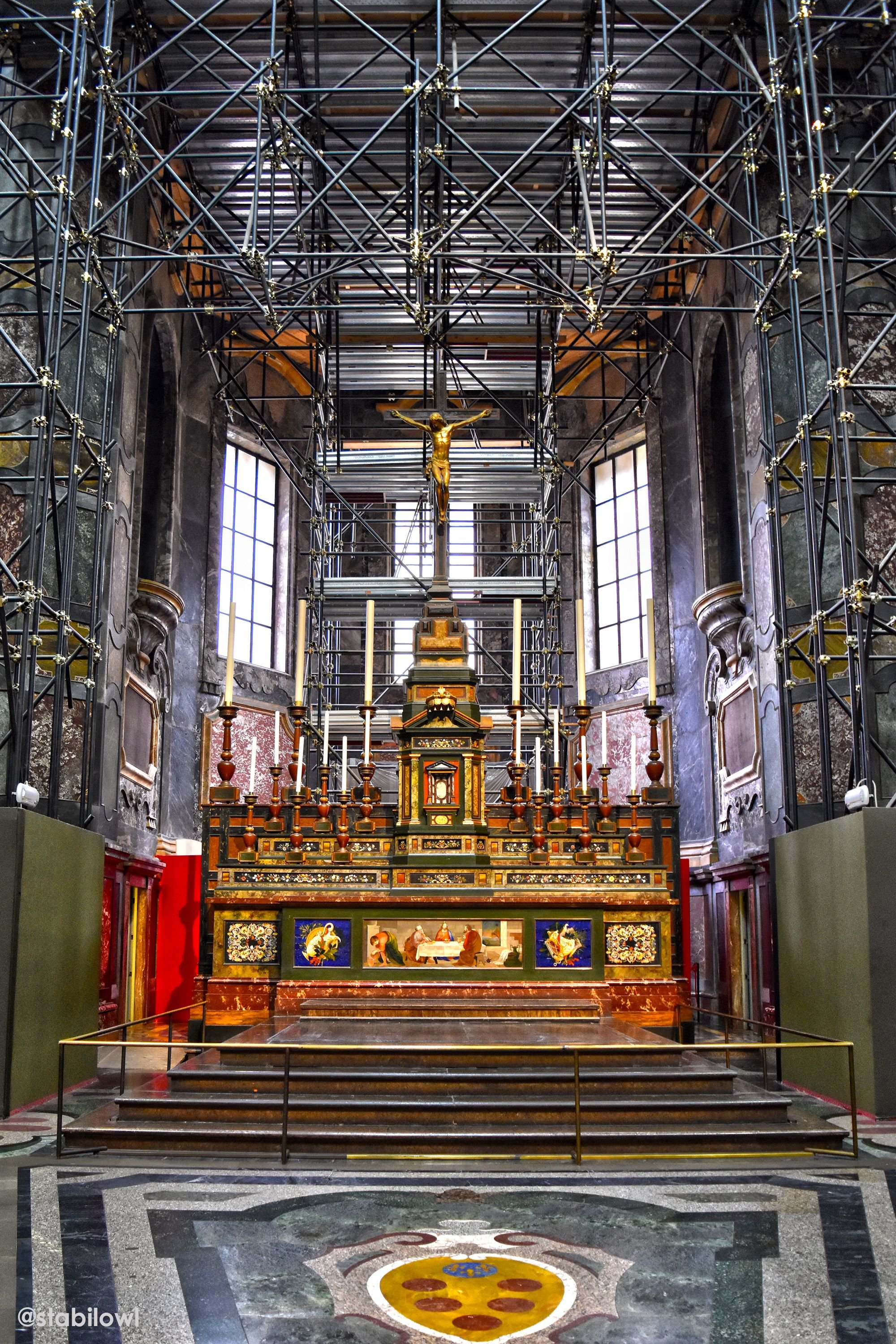
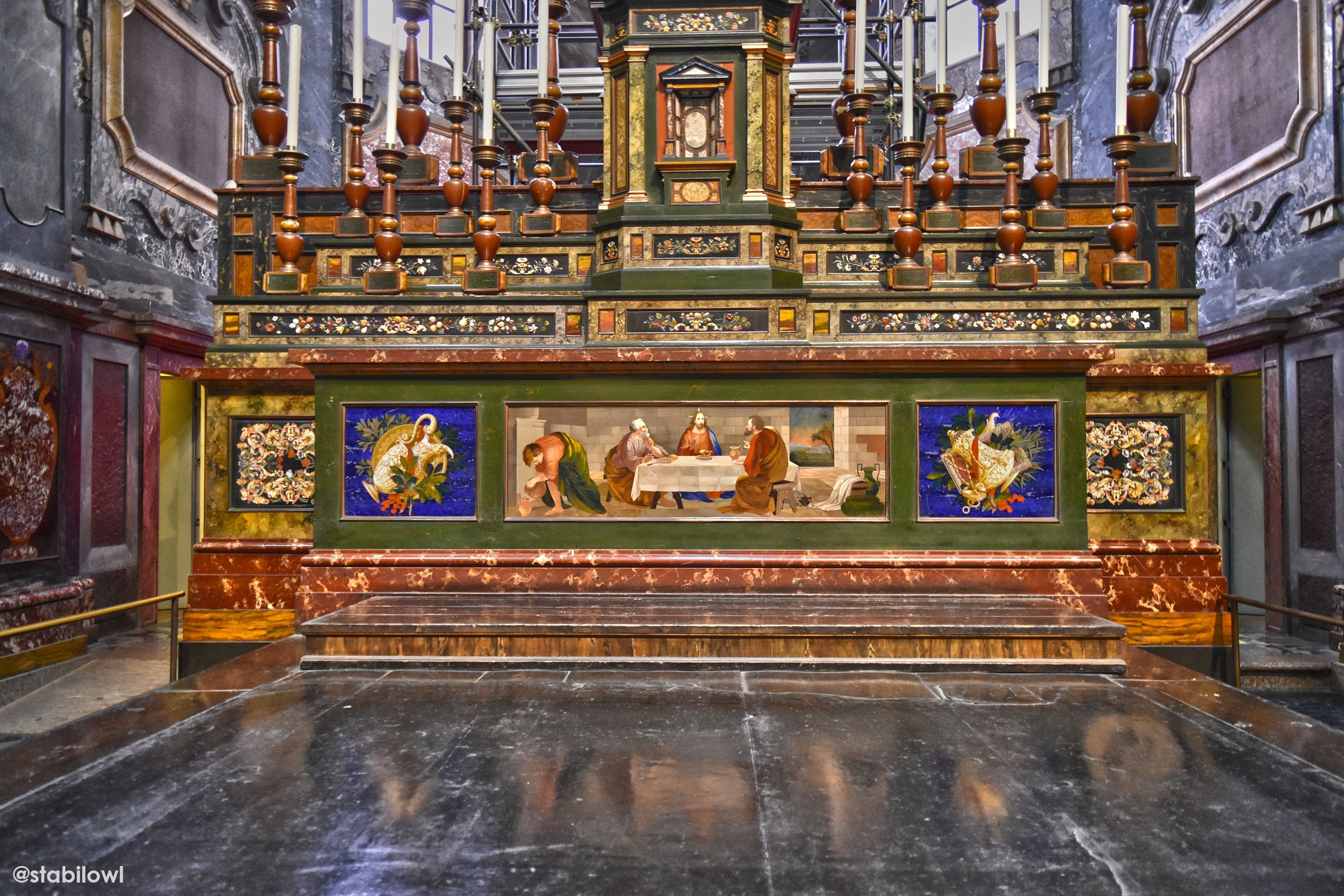
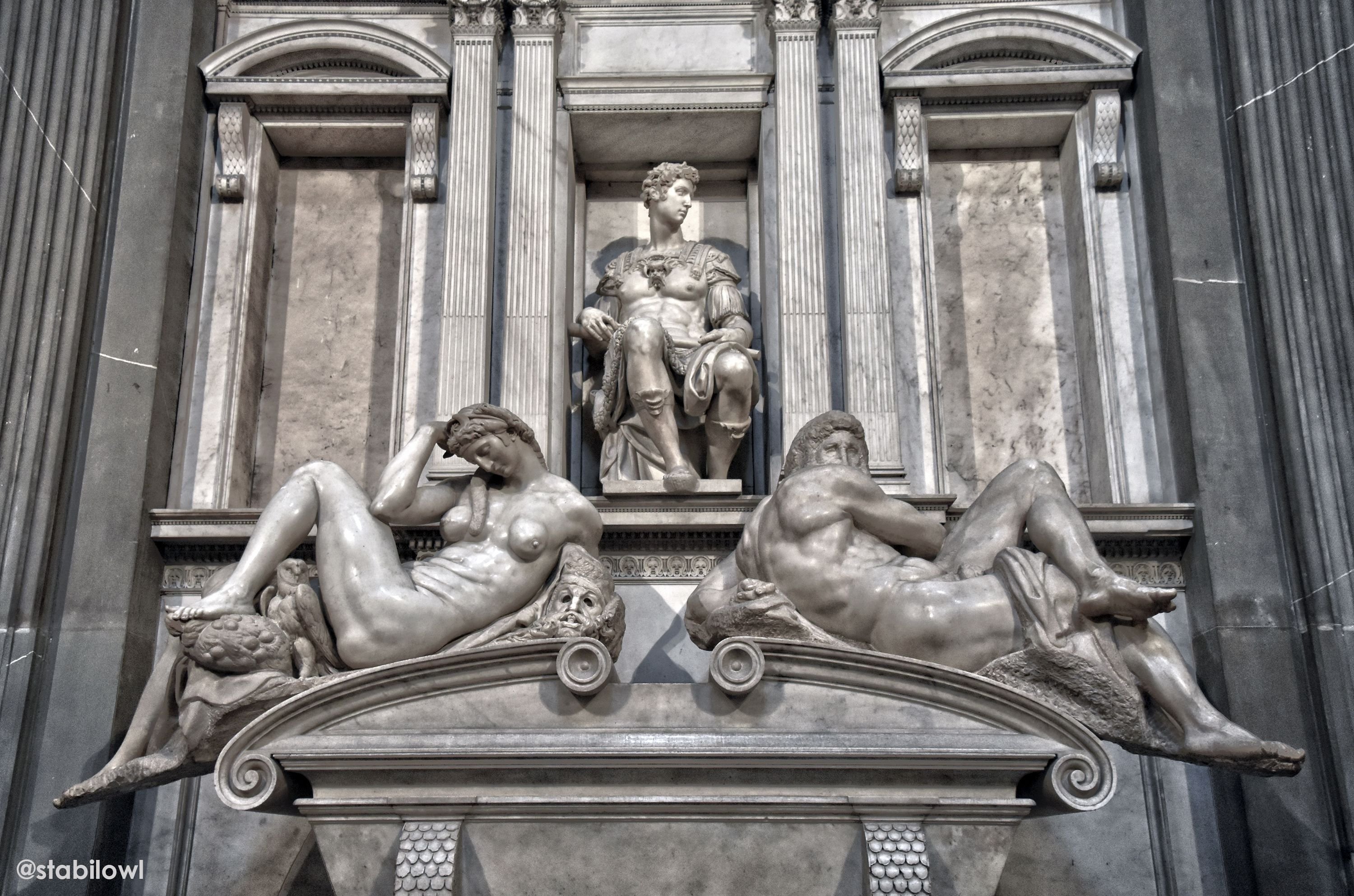
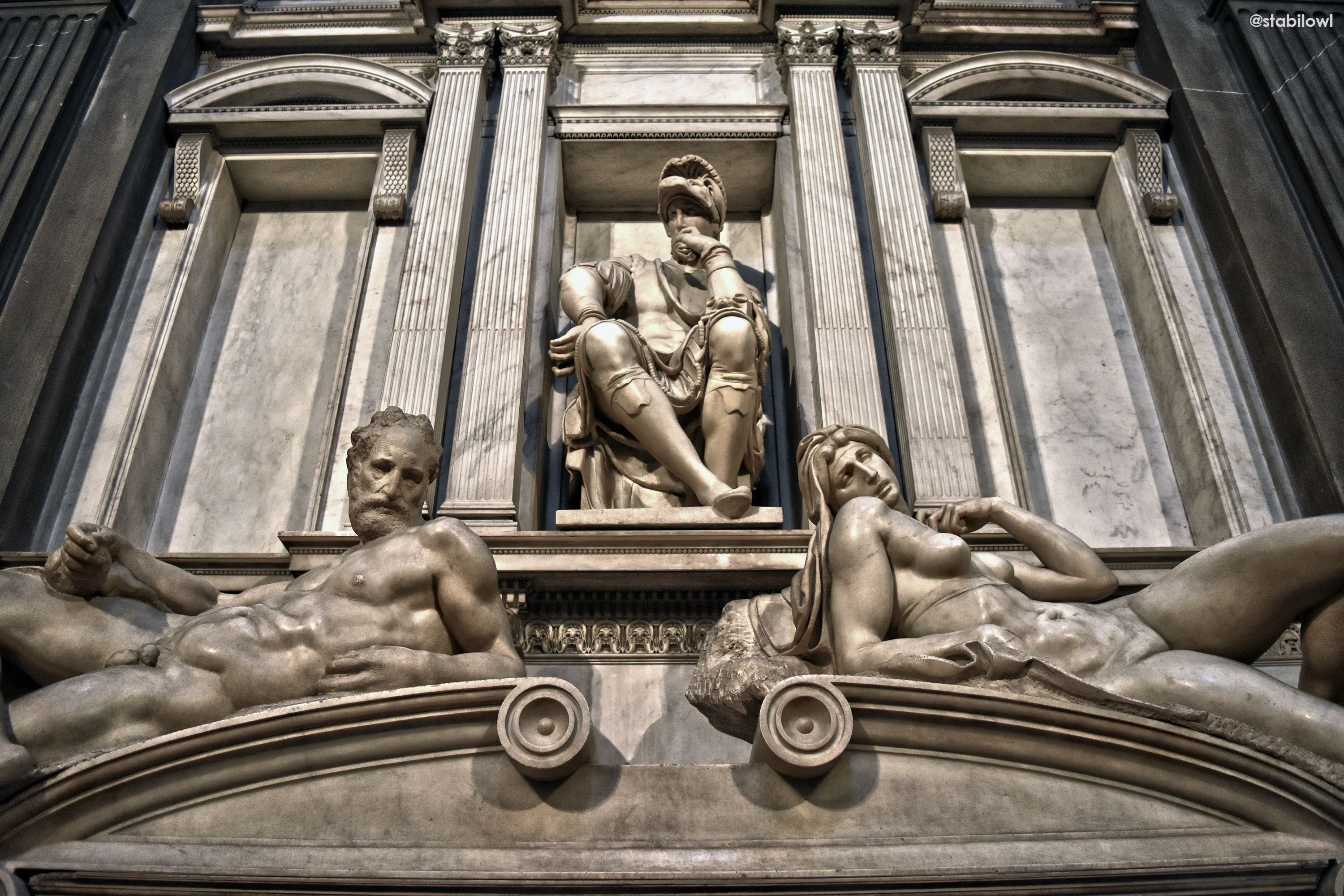
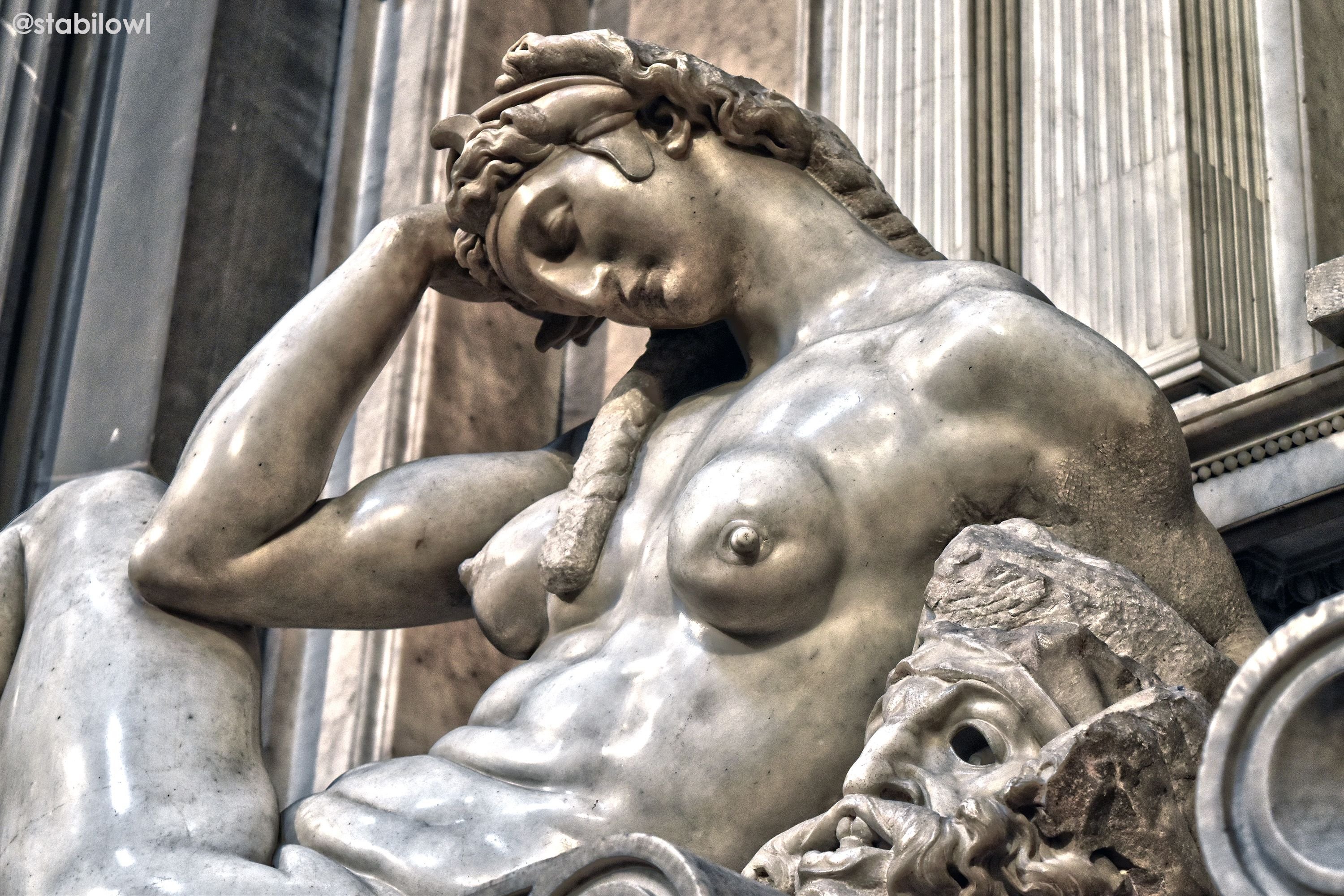
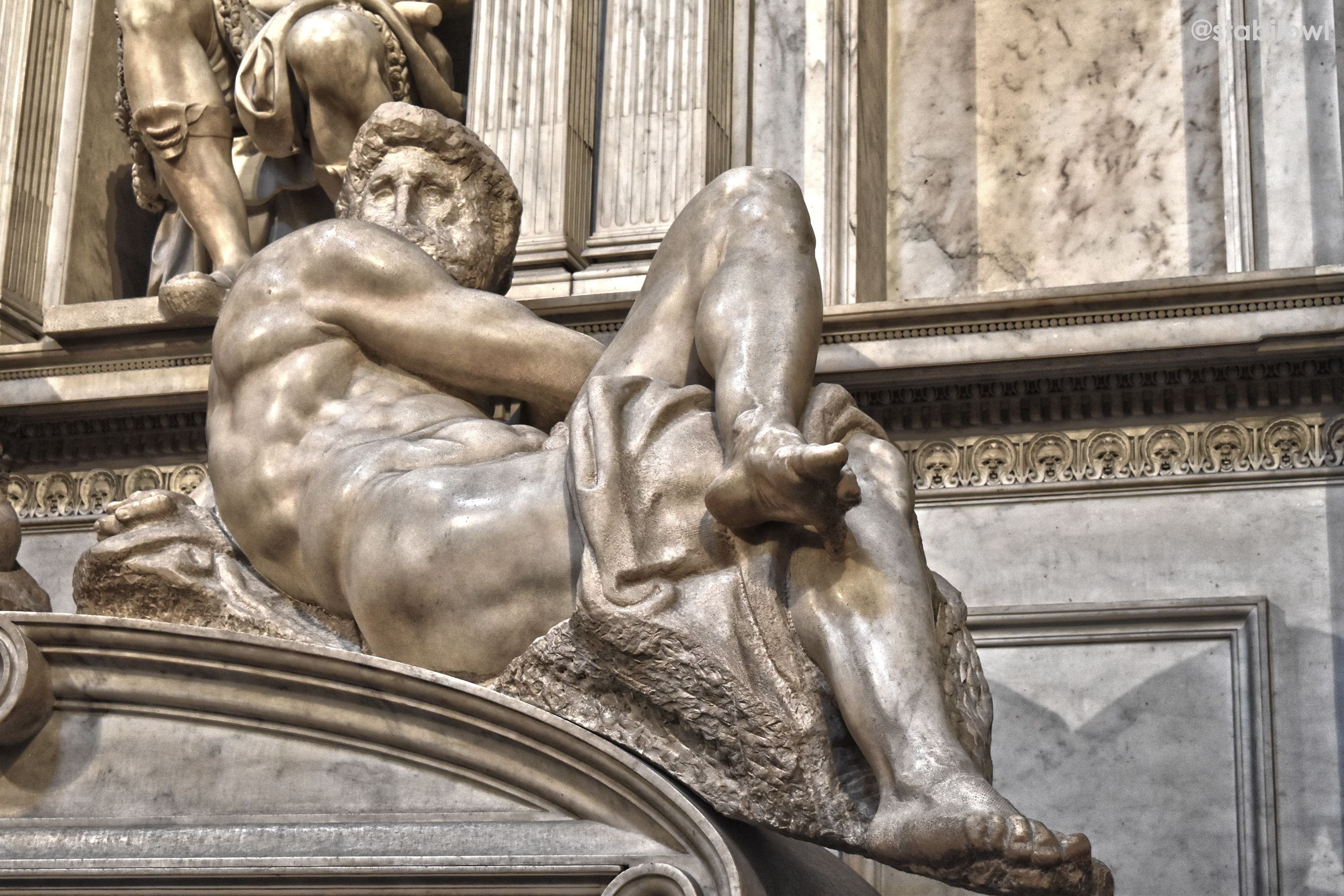
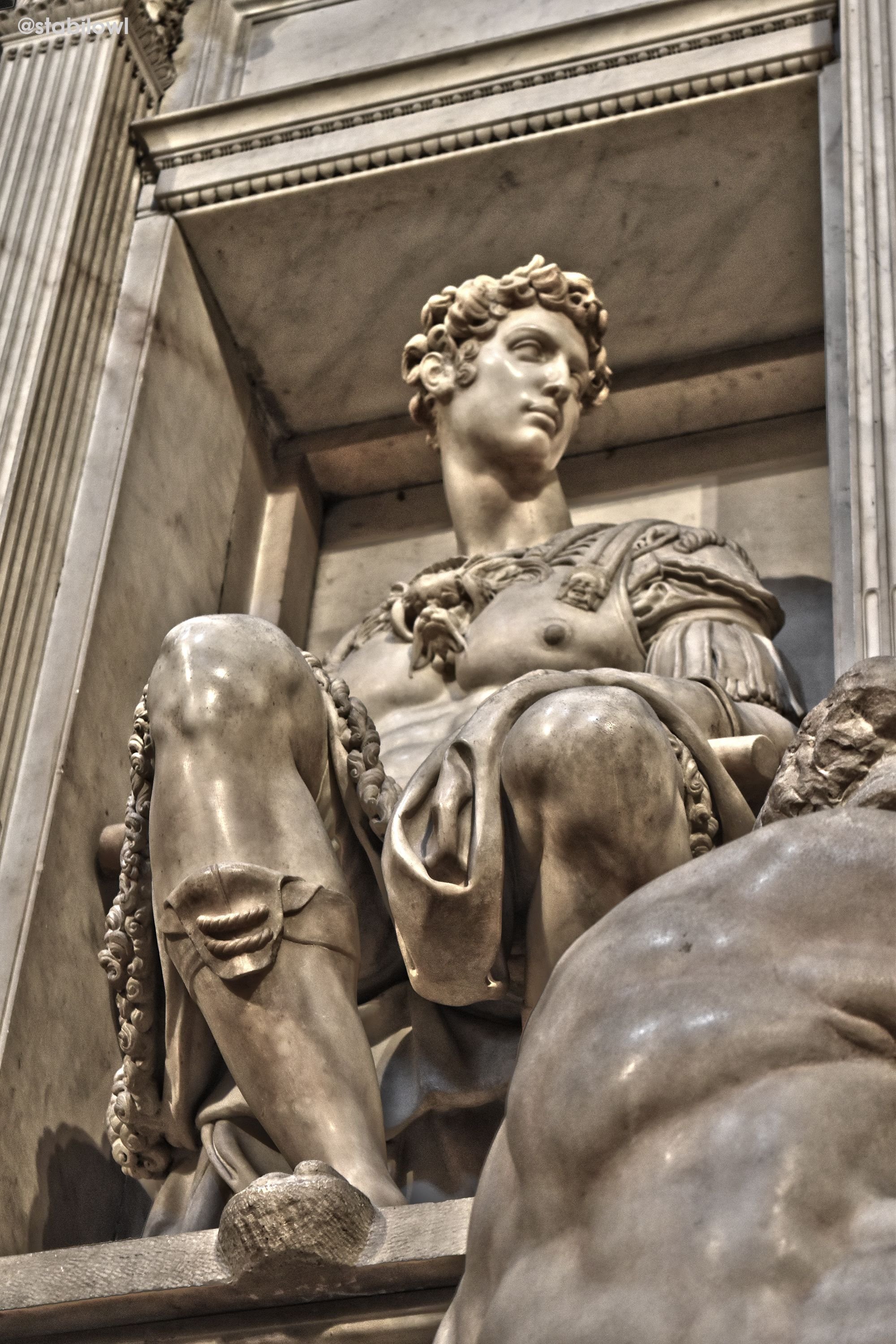
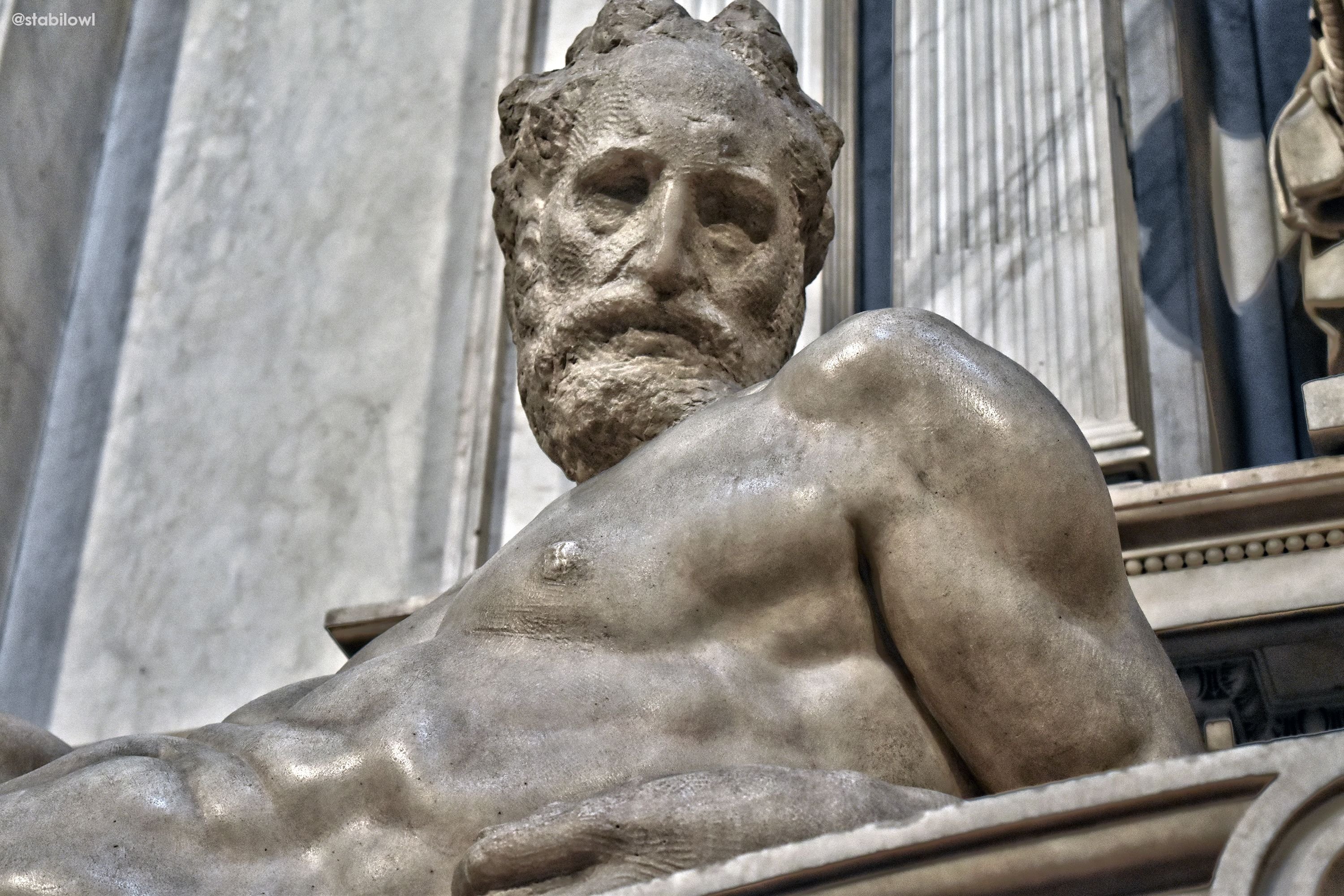
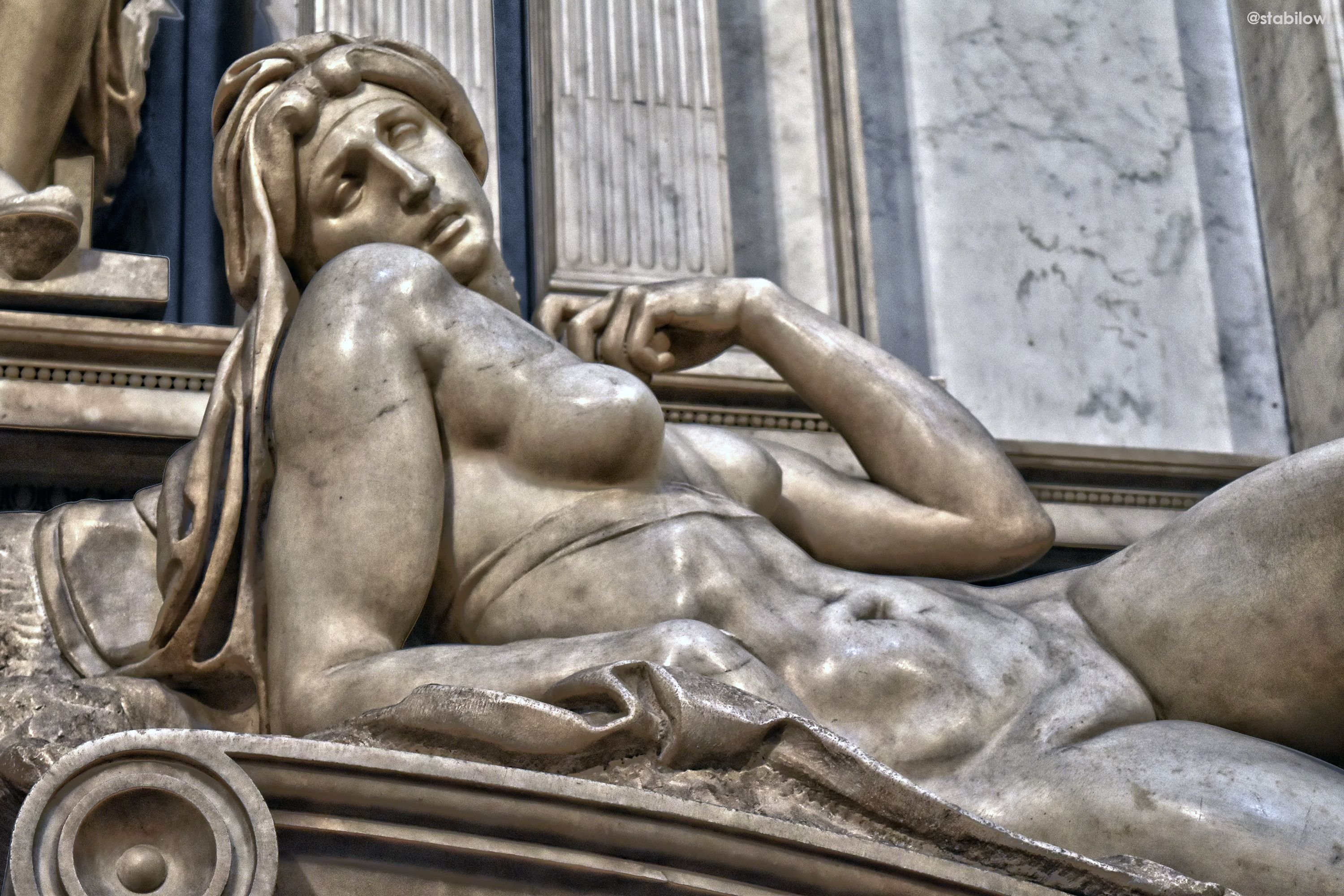
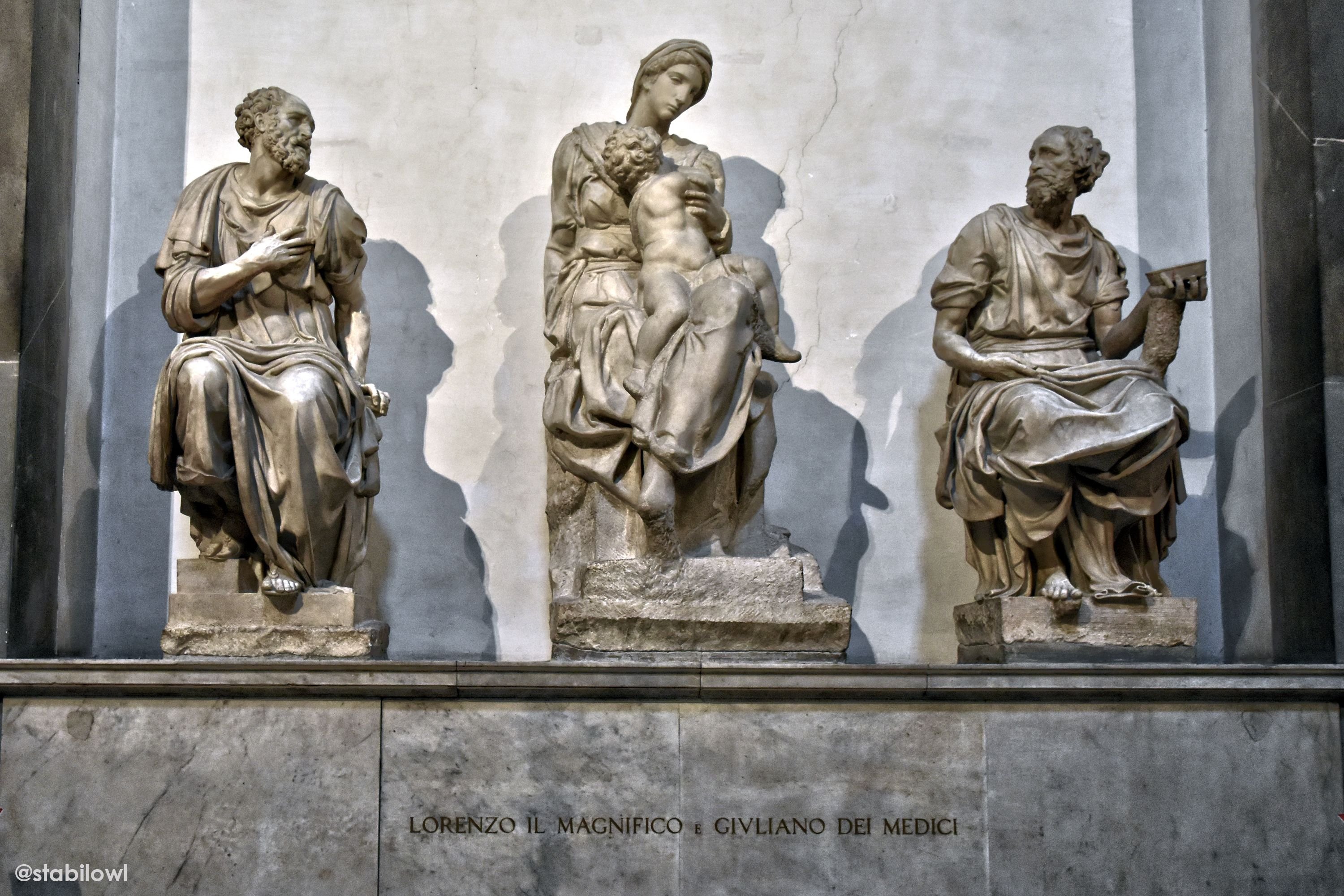
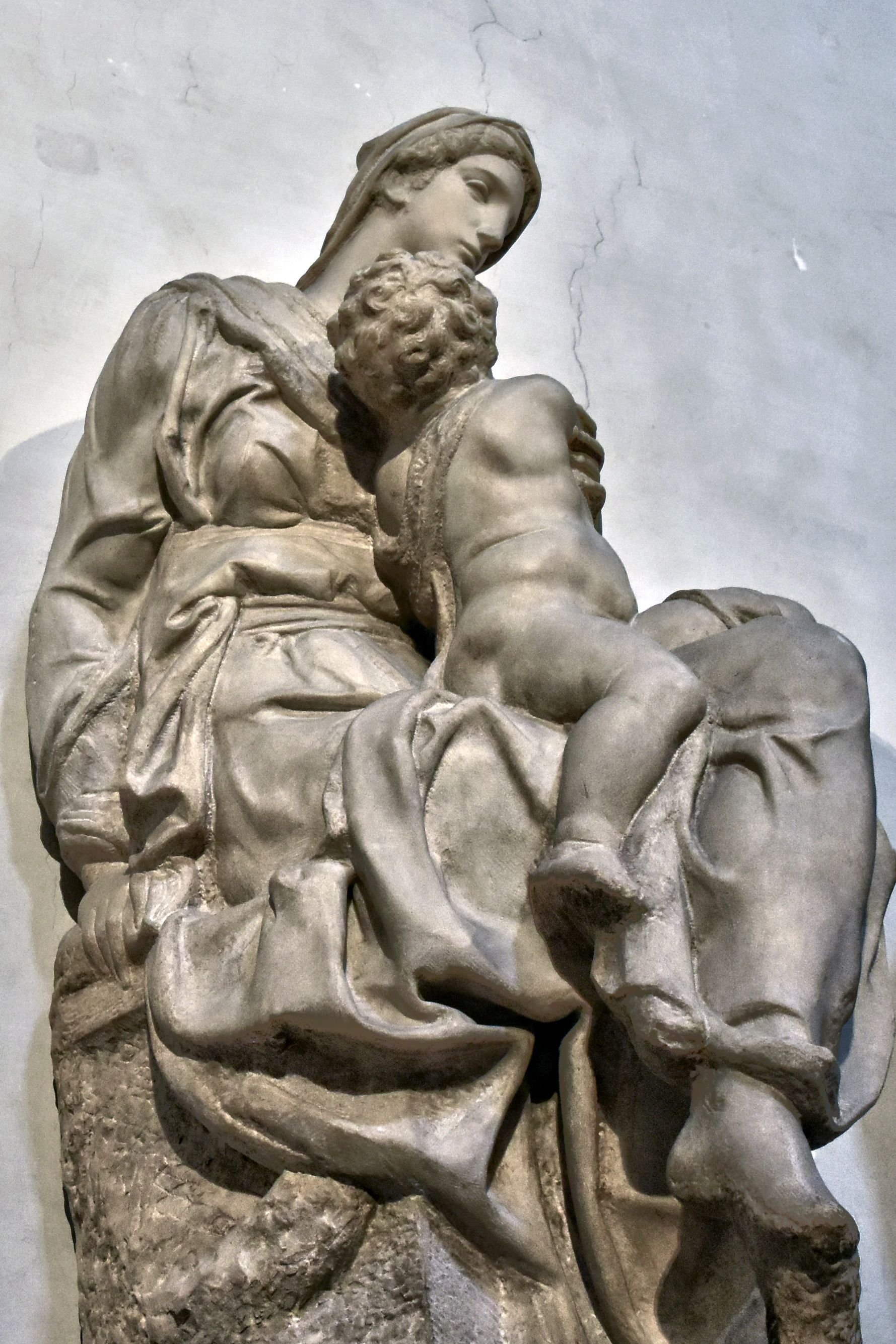
There are lots of other work by Michelangelo that can be found in Florence, such as the Florentine Pieta in Museo dell'Opera del Duomo, and the Laurentian Library which was commissioned by Pope Clement VII. You can also go to Casa Buonarroti, Michelangleo’s home when he was in Florence, to learn about his childhood and admire at his early work. Unfortunately, I wasn’t able to visit these places because of time. But I consider myself fortunate to be able to go on this trip and experience first hand, following Michelangelo’s footsteps. If you are also a history and art lover like me, you should visit Florence too, to see in person the life and work of the Master, Michelangelo.
在佛罗伦斯还能找到其他米开朗基罗的作品,例如在教堂博物馆的佛罗伦斯圣母恸子像,和教宗克莱孟七世让他设计的老楞佐图书馆。在佛罗伦斯还可以去米开朗基罗的旧居了解他的童年生活和他的早期作品。可惜因为时间关系我们没办法一一参观。幸运的是这次旅程让我们有机会亲身了解和感受这一代宗师的生平事迹。假如你也是历史和艺术的爱好者,那么你一定要来一次佛罗伦斯,来一睹名家真迹的风彩。

